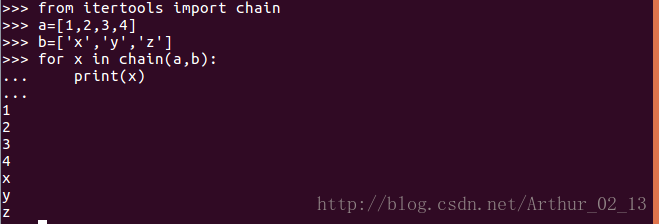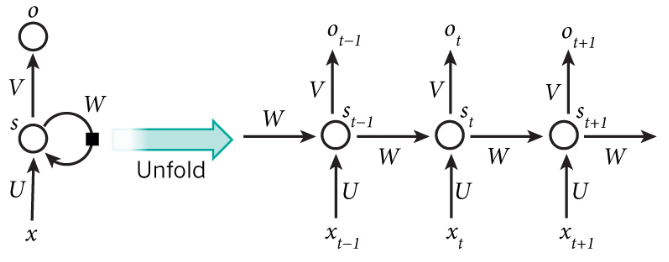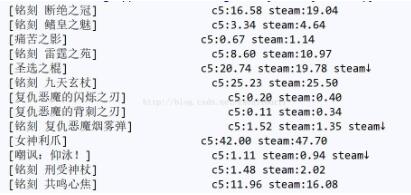Python 中迭代器与生成器实例详解
Python 中迭代器与生成器实例详解
本文通过针对不同应用场景及其解决方案的方式,总结了Python中迭代器与生成器的一些相关知识,具体如下:
1.手动遍历迭代器
应用场景:想遍历一个可迭代对象中的所有元素,但是不想用for循环
解决方案:使用next()函数,并捕获StopIteration异常
def manual_iter():
with open('/etc/passwd') as f:
try:
while True:
line=next(f)
if line is None:
break
print(line,end='')
except StopIteration:
pass
#test case items=[1,2,3] it=iter(items) next(it) next(it) next(it)
2.代理迭代
应用场景:想直接在一个包含有列表、元组或其他可迭代对象的容器对象上执行迭代操作
解决方案:定义一个iter()方法,将迭代操作代理到容器内部的对象上
示例:
class Node:
def __init__(self,value):
self._value=value
self._children=[]
def __repr__(self):
return 'Node({!r})'.fromat(self._value)
def add_child(self,node):
self._children.append(node)
def __iter__(self):
#将迭代请求传递给内部的_children属性
return iter(self._children)
#test case
if __name='__main__':
root=Node(0)
child1=Node(1)
child2=Nide(2)
root.add_child(child1)
root.add_child(child2)
for ch in root:
print(ch)
3.反向迭代
应用场景:想要反向迭代一个序列
解决方案:使用内置的reversed()函数或者在自定义类上实现reversed()
示例1
a=[1,2,3,4]
for x in reversed(a):
print(x) #4 3 2 1
f=open('somefile')
for line in reversed(list(f)):
print(line,end='')
#test case
for rr in reversed(Countdown(30)):
print(rr)
for rr in Countdown(30):
print(rr)
示例2
class Countdown:
def __init__(self,start):
self.start=start
#常规迭代
def __iter__(self):
n=self.start
while n > 0:
yield n
n -= 1
#反向迭代
def __reversed__(self):
n=1
while n <= self.start:
yield n
n +=1
4.有选择的迭代
应用场景:想遍历一个可迭代对象,但是对它开始的某些元素并不感兴趣,想跳过
解决方案:使用itertools.dropwhile()
示例1
with open('/etc/passwd') as f:
for line in f:
print(line,end='')
示例2
from itertools import dropwhile
with open('/etc/passwd') as f:
for line in dropwhile(lambda line:line.startwith('#'),f):
print(line,end='')
5.同时迭代多个序列
应用场景:想同时迭代多个序列每次分别从一个序列中取一个元素
解决方案:使用zip()函数




6.不同集合上元素的迭代
应用场景:想在多个对象执行相同的操作,但是这些对象在不同的容器中
解决方案:使用itertool.chain()函数

7.展开嵌套的序列
应用场景:想将一个多层嵌套的序列展开成一个单层列表
解决方案:使用包含yield from语句的递归生成器
示例
from collections import Iterable
def flatten(items,ignore_types=(str,bytes)):
for x in items:
if isinstance(x,Iterable) and not isinstance(x,ignore_types):
yield from flatten(x)
else:
yield x
#test case items=[1,2,[3,4,[5,6],7],8] for x in flatten(items): print(x)
感谢阅读,希望能帮助到大家,谢谢大家对本站的支持!


